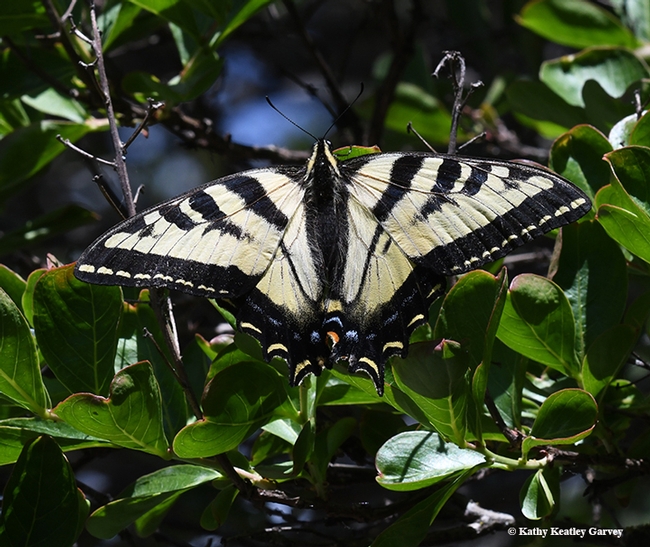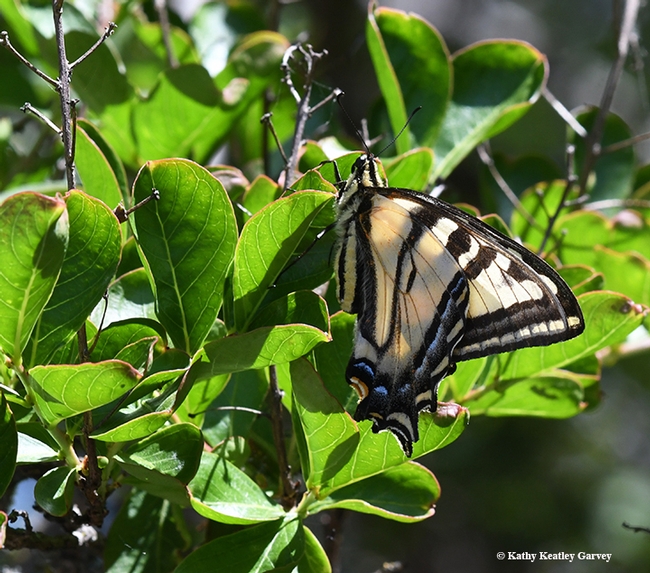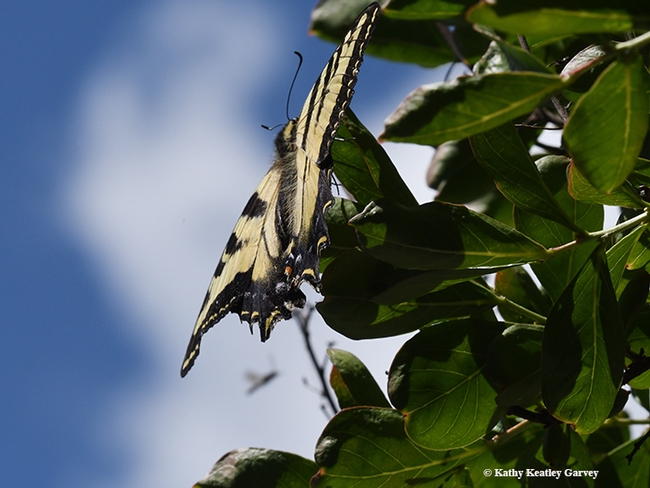Like a ballerina on the dance floor of life, a newly eclosed Western tiger swallowtail, Papilio rutulus, flutters from its host plant, a sycamore tree, to a crape myrtle.
The yellow-and-black butterfly spreads its wings, warming its flight muscles.
It lingers longer than it should (predators abound), but it is in no hurry and neither are we. It folds its wings, looks at the near-cloudless blue sky, and just pauses.
This tiger has no paws, but it knows how to pause.
"The Western tiger swallowtail is basically a species of riparian forest, where it glides majestically back and forth along the watercourse," says butterfly expert Art Shapiro, distinguished professor of evolution and ecology. "It has expanded into older urban neighborhoods where several of its host genera are grown as shade trees, and behaves as if the street were a watercourse," he writes on his website. "Spring individuals are smaller and usually paler than summer. Low-elevation hosts include sycamore (Platanus), ash (Fraxinus), cherry and other stone fruits (Prunus), willow (Salix), privet (Ligustrum), lilac (Syringa) and (in Sacramento County) sweet gum (Liquidambar)."
Soon the Western tiger swallowtail will head for a nectar floral source and find a mate--not necessarily in that order.
Have a safe flight!
Attached Images:

A Western tiger swallowtail, Papilio rutulus,warms its flight muscles on a crape myrtle tree. (Photo by Kathy Keatley Garvey)

The Western tiger swallowtail folds its wings. (Photo by Kathy Keatley Garvey)

An insect, probably a bee, flies near the Western tiger swallowtail. (Photo by Kathy Keatley Garvey)